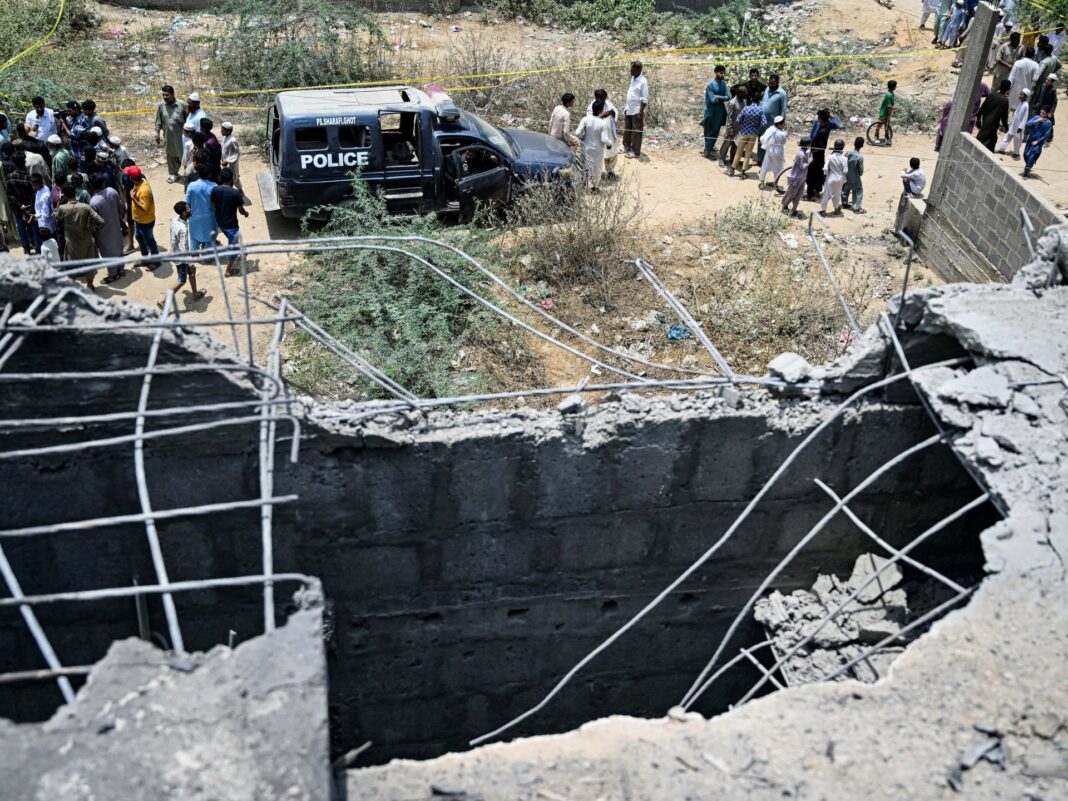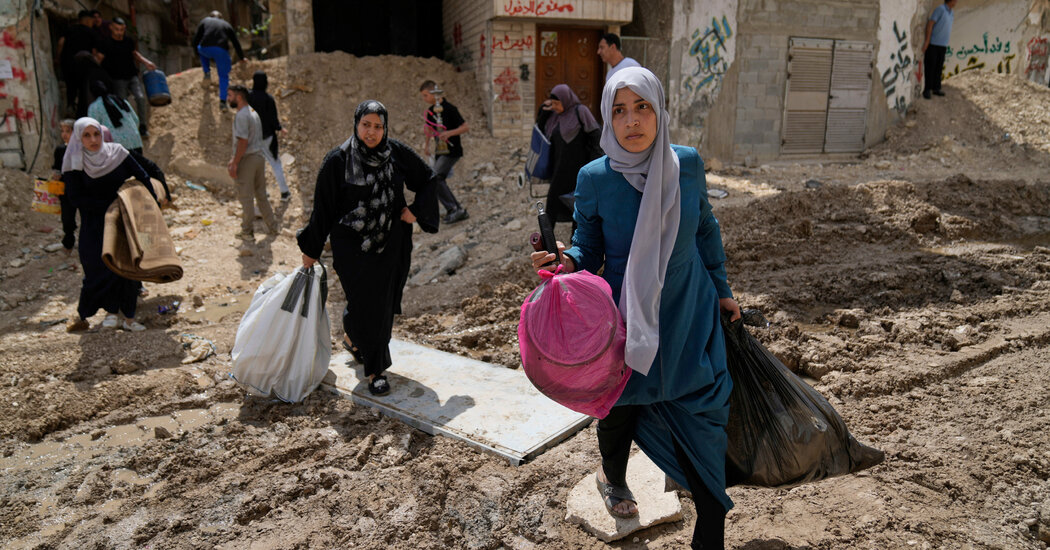Pakistan’s military said on Thursday morning that the country’s air defence system had brought down 25 Indian drones overnight over some of the country’s chief cities, including Lahore and Karachi. At least one civilian has died, and five people were wounded, it said.
India’s Defence Ministry confirmed hours later that it had targeted Pakistan’s air defence radars and claimed that it was able to “neutralize” one defence system in Lahore. It said Pakistan had attempted to attack India and Indian-administered Kashmir with drones and missiles overnight, but that these had been shot down.
The drone attacks represent the latest escalation between the nuclear-armed neighbours, a day after India launched deadly missile strikes on Pakistan and Pakistan-administered Kashmir, killing at least 31 people, according to Islamabad. Those were the most extensive Indian strikes ever on Pakistan outside the four wars that they have fought. Heavy artillery shelling from both sides overnight caused border communities in the disputed Kashmir region to flee.
Simmering tensions erupted on April 22 after gunmen killed 25 tourists and a local pony rider in Pahalgam in Indian-administered Kashmir. India blamed Pakistan for backing fighters who claimed the attack. Islamabad has denied any involvement.
Here’s what we know about the latest escalation of drone attacks:
What happened?
In a briefing on Thursday, Pakistani army spokesman Lieutenant General Ahmad Sharif Chaudhry said the country came under attack from a wave of drones overnight, targeting many of the most populated cities, including Karachi and Lahore.
Pakistan’s air defence system intercepted and brought down these drones, he said. Pakistan’s military said 25 such drones were jammed and shot out of the sky.
The falling debris killed one civilian and injured another person in the southern Sindh province, while an additional drone targeted and wounded four soldiers in a military installation in Lahore, Chaudhry said in the news briefing. Partial damage to “military equipment” was recorded in that latter incident.
Chaudhry described the drone attacks as an act of “naked aggression” and a “serious provocation”, and pledged that Pakistan was ready to retaliate.
“It appears that India has apparently lost the plot and, rather than going on a path of rationality, is further escalating in a highly charged environment. Pakistan Armed Forces remain fully vigilant to any type of threat,” he said.
What has India said?
Hours after the drone attacks, India accepted responsibility – but insisted it had been provoked.
On the night of May 7-8, India’s Ministry of Defence said, Pakistani forces attempted to “engage a number of military targets” in multiple areas in northern and western India and Indian-administered Kashmir using “drones and missiles”. These were shot down by India’s air defence systems, the ministry said.
“Today morning Indian Armed Forces targeted Air Defence Radars and systems at a number of locations in Pakistan. Indian response has been in the same domain with same intensity as Pakistan,” the ministry’s statement said. “It has been reliably learnt that an Air Defence system at Lahore has been neutralised.”
Pakistan has not commented on Indian claims that it attempted to strike India with drones and missiles.

Where were the drones in Pakistan brought down?
In his briefing, Pakistan army spokesperson Chaudhry said drones either attacked or were shot down in the following locations:
Lahore: The capital of the eastern Punjab region, and Pakistan’s second-largest city of 14 million people. Local police official Mohammad Rizwan told reporters a drone was downed near Walton Airport, an airfield that the Pakistani military manages and uses for radars. The airport also has training schools.
Gujranwala: The fourth-largest city in Punjab, with a population of 2.5 million people.
Chakwal: Also in the Punjab region, with a population of about 1.5 million.
Rawalpindi: The city in Punjab is home to the headquarters of Pakistan’s powerful military. The city has a population of close to 6 million people.
Attock: Close to the capital, Islamabad, Attock is a cantonment city with a population of 2.1 million.
Nankana Sahib: The Punjab city has a population of just more than 100,000 but enjoys far greater significance than that number suggests: It was the birthplace of Guru Nanak, the founder of Sikhism, and is one of the holiest sites of the faith.
Bahawalpur: Also in Punjab, it has a population of nearly one million.
Miano: A town in Sindh province, housing a major oil field.
Chor: A small town in the Umerkot district of the southeastern province of Sindh.
Ghotki: A city in northern Sindh known for its date palms, with a population of about 120,000.
Karachi: Pakistan’s most populous city of 20 million people is based in Sindh.
Which cities did India claim Pakistan was targeting?
India said Pakistani missiles and drones attempted to strike 15 cities and towns but that all were brought down.
Awantipora: A town of 12,000 people, on the Jhelum River in Indian-administered Kashmir.
Srinagar: The biggest city in the Kashmir valley, Srinagar has a population of 1.2 million people.
Jammu: The winter capital of Indian-administered Kashmir, it has a population of 500,000 people.
Pathankot: Also in Indian-administered Kashmir, Pathankot is a major nerve centre of the Indian army’s operations. It is home to the largest military base in Asia.
Amritsar: The city in India’s Punjab state has a population of 1.1 million and is home to the Golden Temple, one of Sikhism’s holiest shrines.
Kapurthala: A smaller town of 100,000 people in Indian Punjab.
Jalandhar: Right next to Kapurthala, Jalandhar has a population of nearly 900,000.
Ludhiana: The most populous city in Indian Punjab is home to 1.6 million people.
Adampur: The Punjab town is tiny, with just 20,000 people. But it is home to India’s second-largest air force base.
Bhatinda: The city in Indian Punjab has a population of nearly 300,000.
Chandigarh: The capital of both Indian Punjab and the neighbouring state of Haryana, Chandigarh has a population of just more than one million.
Nal: A tiny town near the India-Pakistan border in the desert state of Rajasthan, it is home to a civilian airport and an air force base.
Phalodi: A city of 66,000 people in Rajasthan, Phalodi is famous for its salt industry.
Uttarlai: A small village in Rajasthan that is home to an air force station.
Bhuj: A city of 190,000 people, Bhuj is in Gujarat, the western state of Indian Prime Minister Narendra Modi.
What drones were used in the attack on Pakistan?
Chaudhry, the Pakistani military spokesperson, identified the Indian projectiles as Harop drones.
Harop drones are a form of what are known as loitering munitions, and are developed by the Israeli government’s primary aviation manufacturer and supplier, Israel Aerospace Industries (IAI).
Loitering munitions are usually remotely controlled unmanned air vehicles (UAVs) designed to hover in the air after being deployed, waiting for a precise target to be exposed before they crash into it and self-detonate.
They are not meant to survive a confrontation, and so are also known as suicide drones or kamikaze drones.
The IAI Harop is reputed to be one of the deadliest drones because it combines ordinary UAV and missile capabilities. Spanning two metres (6.6ft) in length, the vehicle is small enough to bypass most aircraft detection systems. It can fly over a range of 200km (120 miles) and is programmed for about six hours of flight. The drone can return and land at its launch base if it fails to engage a target.
The Indian Armed Force (IAF) is one of Israel’s biggest clients for drones. Between 2009 and 2019, India bought at least 25 Harop drones, with a single sale of 10 units costing $100m, according to reporting by The Jerusalem Post.
India’s fleet also includes Searcher and Heron drones, similarly manufactured by the IAI. Searchers are typically used for reconnaissance missions, while the Heron has similar missile capabilities to the Harop.
Why are the drone attacks on Pakistan significant?
Multiple drones breaching Pakistan’s airspace, hovering in the country’s most populous regions, and managing to attack a military location imply that India has the capabilities to breach Pakistan’s air defence and strike its most crucial nerve centres.
The attacks, according to the Pakistani army, were an “extreme act of provocation” that could lead to a major escalation of violence between the two nuclear powers.
Additionally, the drone breach poses a potential threat to civil aviation safety in Pakistan.
The country’s civil aviation authorities temporarily suspended operations in four airports on Thursday, before lifting the restrictions: Allama Iqbal International Airport in Lahore, Jinnah International Airport in Karachi, Islamabad International Airport, and Sialkot International Airport.
What’s the wider context?
Kashmir, famed for its picturesque lakes, meadows and snow-capped mountains, is at the heart of tensions between the two countries.
India and Pakistan both administer parts of it, as does China. But India claims all of it, and Pakistan claims Indian-administered Kashmir, too. Three of the four previous India-Pakistan wars have been over Kashmir, which spans 22,200 sq km (8,570 square miles).
India has for years blamed Pakistan for supporting, arming, and training armed groups seeking secession from India. Pakistan has insisted it provides only moral and diplomatic support to Kashmir’s separatist movement.
New Delhi blamed April’s attack on an obscure group, The Resistance Front (TRF), and claimed it was Pakistan-backed. Islamabad, however, has denounced the attacks and denied involvement, calling for a “transparent, credible, impartial” investigation into the incident.
Both countries, with a combined population of 1.6 billion, are nuclear powers, raising fears among security experts that further escalation could be disastrous.


